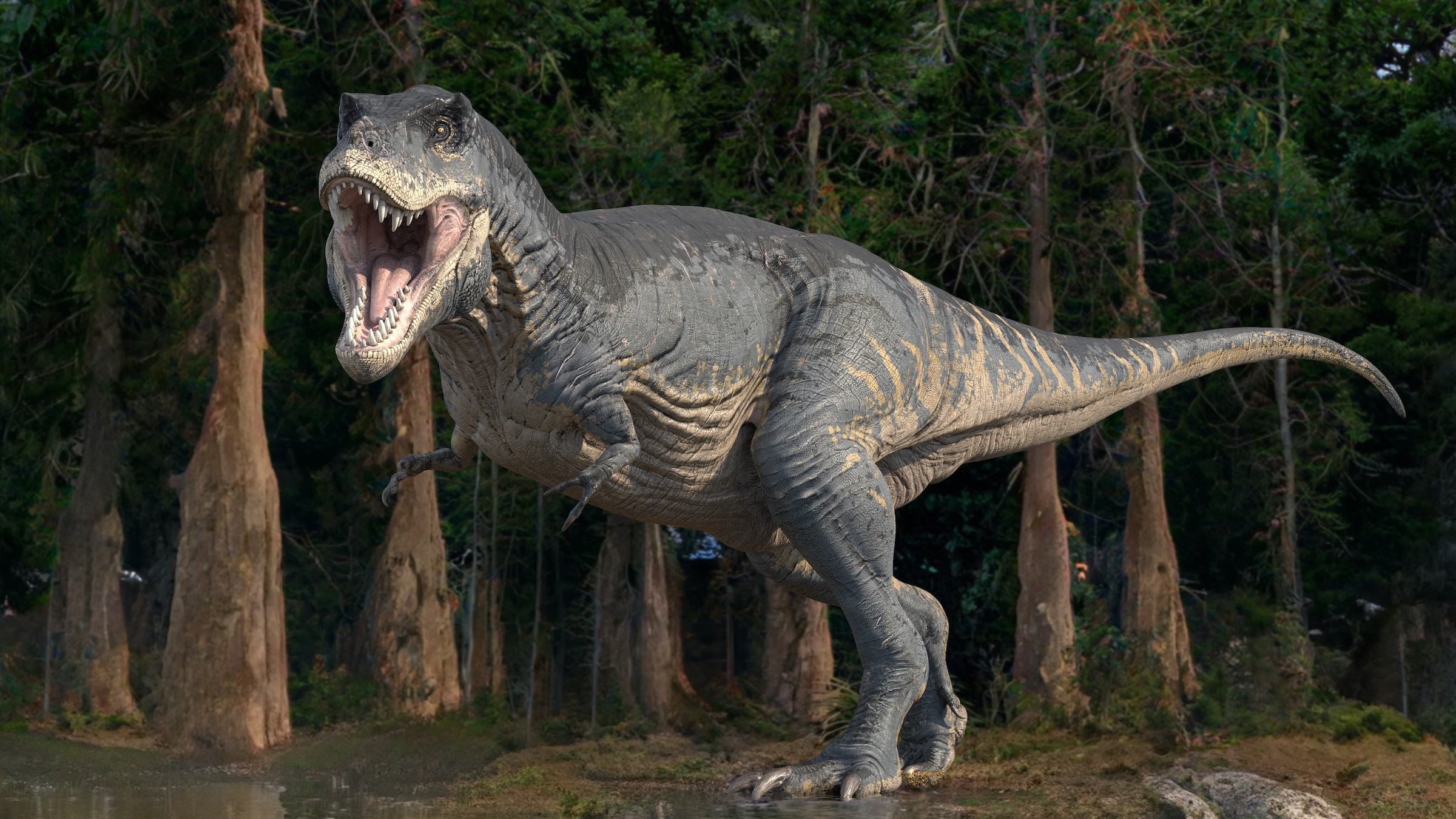Why did T. rex have such tiny arms?
Tyrannosaurus rex and many of its theropod cousins had large bodies but tiny arms. What gives?
Tyrannosaurus rex was a vicious hunter with the strongest bite of any animal ever to walk on land. The beast prowled the late Cretaceous wilderness more than 66 million years ago, looking for a Triceratops or Edmontosaurus to munch on.
The only thing not menacing about the king of the tyrant lizards was its tiny arms. T. rex wasn't the only dinosaur with small arms compared with the rest of its body; many of its theropod cousins — a group of bipedal, mostly meat-eating dinosaurs — shared this trait. But why did many theropods evolve such stubby arms?
Scientists have proposed a few possible explanations.
Related: What color were the dinosaurs?
A 2021 study published in the journal Acta Paleontologica Polonica suggested that bone-crushing theropods such as T. rex evolved small arms so they wouldn't bite each other's arms off when they fed. Paleontological evidence suggests that these animals devoured their prey as a pack, so perhaps they evolved the little limbs to avoid accidental arm-ripping as a throng of theropods descended on a tackled Triceratops, the study author proposed.
Right now, however, this is just a hypothesis. "It's a nice story," said John Hutchinson, a biologist at the University of London's Royal Veterinary College who wasn't involved in the study. "But I think, ultimately, we don't really know."
Hutchinson, who studies the biomechanics of movement in large terrestrial animals — both living and extinct — looks at dinosaur forelimb evolution a different way: In the evolution of theropods, "the arms didn't really get shorter, but the legs got longer," he said.
Get the world’s most fascinating discoveries delivered straight to your inbox.
"As the animals get bigger, the forelimbs get smaller and the head gets bigger," he continued. Tyrannosaurs, in particular, "adapt this bone-crushing killer bite in their head, so they really specialize their head and then they just really, really reduced their forelimbs."
As tyrannosaurs and their theropod cousins evolved larger heads and a bipedal posture, they used their forelimbs less. They started to use their heads more for catching and killing prey. As a result, the forelimbs didn't grow as much as the rest of their bodies did, according to this idea.
"An animal can only devote so much of its body volume to one thing or another," Hutchinson said. "He can't be a jack-of-all-trades. So you either have a very generalized body where everything's equally specialized for some general ecological niche, or you really specialize like T. rex, who is super specialized to be a front-end predator."
T. rex's arms were too short to help it hunt and kill. These huge dinosaurs used a "puncture-pull" method of bringing down prey, in which T. rex would bite "big chunks out of them, ripping backwards with their strong neck as they did so," Hutchinson said. This is how modern komodo dragons (Varanus komodoensis) hunt as well, he added. And their large back legs would have helped stabilize them. There's no evidence — currently — that their small arms helped in any way.
It's tempting to assume that every trait an animal possesses has some kind of evolutionary role in helping the creature survive. But sometimes traits just appear (or disappear) that don't necessarily confer a clear-cut evolutionary benefit. In this case, that trait — forelimb length — didn't change, while other traits did. Other T. rex body parts grew to colossal sizes to help them survive in their ecological niche. There might not have been a need for the arms to grow with the rest of T. rex's body, making them look comically small in comparison.
But that might not be the full story, either, Hutchinson said; T. rex and other theropods may have used their arms for something, and it will take a lot more research and well-preserved fossils to find out what.

JoAnna Wendel is a freelance science writer living in Portland, Oregon. She mainly covers Earth and planetary science but also loves the ocean, invertebrates, lichen and moss. JoAnna's work has appeared in Eos, Smithsonian Magazine, Knowable Magazine, Popular Science and more. JoAnna is also a science cartoonist and has published comics with Gizmodo, NASA, Science News for Students and more. She graduated from the University of Oregon with a degree in general sciences because she couldn't decide on her favorite area of science. In her spare time, JoAnna likes to hike, read, paint, do crossword puzzles and hang out with her cat, Pancake.


